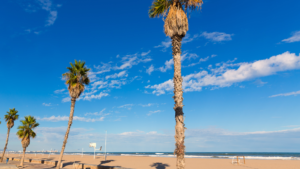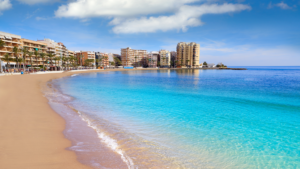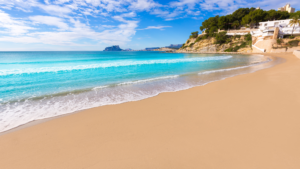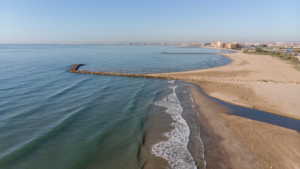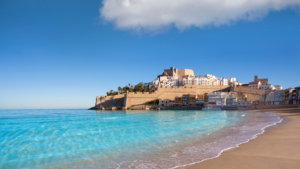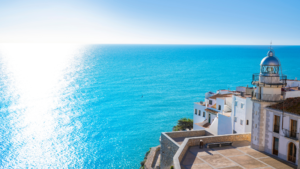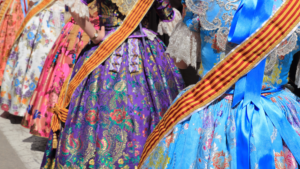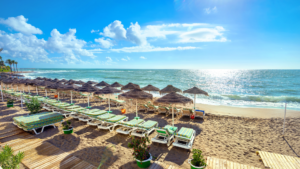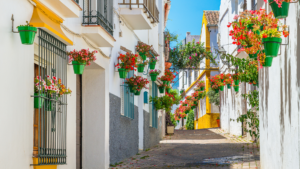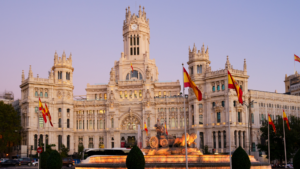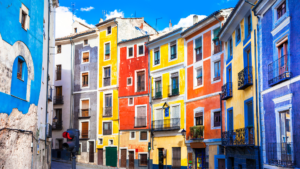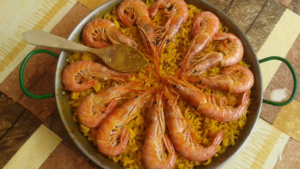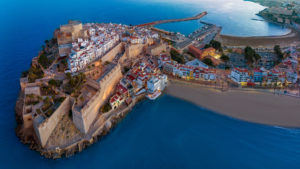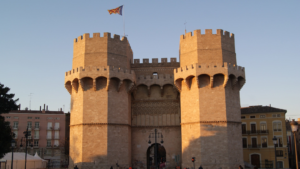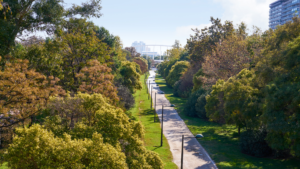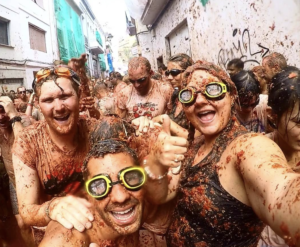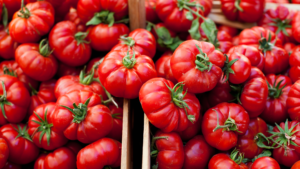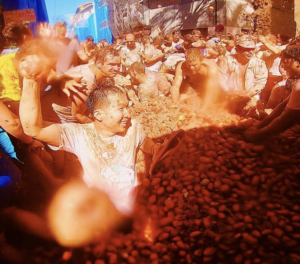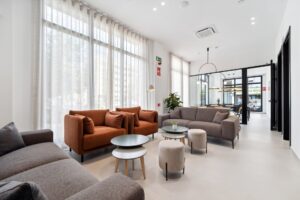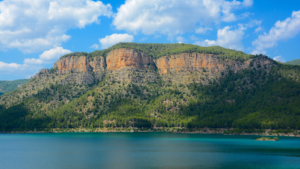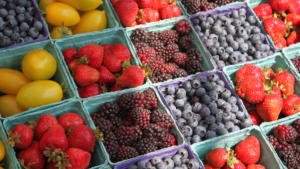Valencia Clubs: All About Valencia’s Nightlife
Valencia, the charming coastal city of Spain, is not only celebrated for its oranges and paella but also for its iconic nightlife.
In general, Spanish nightlife is famously late-starting and long-lasting, with locals often heading out well after dark and staying until sunrise. In Valencia, this tradition blends with the city’s youthful energy and cultural diversity to offer a variety of party options, from sultry salsa spots to cutting-edge techno clubs.
Let’s explore the best Valencia clubs and nightlife spots!
The 7 Best Clubs in Valencia, Spain
Valencia clubs offer a little bit of everything, from hard-hitting techno beats to lively pop dancefloors. Here are the 7 top Valencia clubs you should consider for an unforgettable night out.
1. L’Umbracle
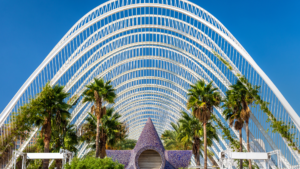
Located in the stunning City of Arts and Sciences, L’Umbracle is a terrace club that offers breathtaking views and an open-air vibe. The music ranges from reggaeton to top 40 hits, and its lush garden setting makes it a glamorous spot for both locals and tourists. Expect a cover charge, especially on weekends, but the experience is well worth the cost.
- Price: Moderate to high
- Dress Code: Trendy clubwear, dressy
- Type of Music: Reggaeton, top 40 hits
2. Mya
Right beneath L’Umbracle, you’ll find Mya, known for its electric atmosphere and popular amongst a young, international crowd. This club has a wide-open dance floor with different music genres, ranging from reggaeton to electronic. Mya is known for hosting top DJs, and its central location makes it a must-visit for a night of clubbing. Typically, a ticket to L’Umbracle also grants you access to Mya, and visa versa.
- Price: Moderate to high
- Dress Code: Trendy clubwear
- Type of Music: Reggaeton, electronic
3. Play Club

Located in the Cedro district, Play Club is known for its electronic music scene. This is where you’ll meet Valencia’s hip crowd, dancing to both underground tracks and the latest hits. The club’s relaxed dress code and affordable drinks attract a diverse group of party-goers.
- Price: Affordable
- Dress Code: Club casual
- Type of Music: Indie, electronic
4. Akuarela Playa
If you prefer dancing on the beach, Akuarela Playa is your go-to destination during the summer months. This beachfront club plays a mix of Spanish pop and international hits, offering themed nights and a lively atmosphere that doesn’t stop until the sun comes up.
- Price: Moderate
- Dress Code: Trendy clubwear, nice beachwear
- Type of Music: Spanish pop, international hits
5. Marina Beach Club

Located on the aesthetic shores of Valencia’s coastline, Marina Beach Club epitomizes luxury nightlife with its stunning ocean views and sophisticated setting. By day, it functions as a serene place where visitors can relax by the pool and have some casual drinks. As night falls, the venue transforms into a world-class club where the latest EDM and house tracks energize the crowd.
- Price: High
- Dress Code: Fashionable, beach chic
- Music: EDM, house, special theme nights
6. Oven
Oven Club, right in the heart of Valencia, is a hotspot for those who appreciate the energy and intimacy of underground music scenes. Known for its deep techno beats, Oven attracts a dedicated following of techno aficionados. The club’s atmosphere is raw and authentic, with a focus on quality sound and immersive lighting.
- Price: Moderate
- Dress Code: Casual
- Type of Music: Deep house, techno
7. Piccadilly Club
Piccadilly Club is a dynamic choice in Valencia’s nightlife, known for its silent disco nights where guests can choose from several channels of music broadcasted through colorful headphones. The club also hosts regular party nights with a range of music styles, from top 40 hits to electronic and reggaeton.
- Price: Moderate
- Dress Code: Casual to trendy
- Type of Music: Varied, includes a silent disco
The Best Bars in Valencia, Spain

For those looking for a more laid-back evening, Valencia’s bar scene offers a nice alternative to the energetic club scene. From stylish cocktail lounges to traditional Spanish bodegas, there’s something for everyone.
#1. Café de las Horas
This baroque-style café and bar is famous for its signature cocktail, Agua de Valencia. Decked out with elaborate decor, it provides a unique and cozy setting ideal for a relaxing evening drinking with friends.
#2. Radio City
A staple of the old town, Radio City is a live music bar known for its affordable drinks and authentic, dance-friendly atmosphere. It’s the perfect spot to savor diverse entertainment and local bands, all while enjoying a delicious, budget-friendly mojito!
#3. St. Patrick’s Irish Pub
A favorite among expats, St. Patrick’s is your classic no-frills Irish pub. It’s a great spot to catch a sports game, language exchange or enjoy live music over the weekend. This is also known as the go-to international bar in Valencia. If you’re looking to meet English speakers, St. Patrick’s is definitely the place.
#4. Olhöps Craft Beer House
For craft beer enthusiasts, Olhöps is a must-visit. With a vast selection of local and international brews, along with a knowledgeable staff, it’s a perfect place for a casual hangout along with a few pints.
#5. El Cafetín
Right in the center of the city, El Cafetín has a unique charm with its whimsical and eclectic decor. This cozy, “hole-in-the-wall” bar is perfect for those seeking a quiet nook to enjoy some quality time over delicious cocktails. Be sure to grab a pitcher of Agua de Valencia or Sangria – they are known to be particularly strong!
The Best Areas to Go Out in Valencia
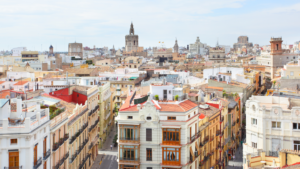
Ruzafa is undoubtedly the heart of Valencia’s nightlife. This trendy neighborhood is packed with bars, clubs, and restaurants that attract a diverse and rowdy crowd. El Carmen, with its narrow streets and historical ambiance, offers more traditional Spanish nightlife with tapas bars and more intimate dance floors.
If you’re undecided about your plans for the night, we recommend taking a leisurely stroll through the streets of Ruzafa. Since the neighborhood comes to life on weekends, it is typically filled with young party-goers hopping from place to place. As you wander, you’re sure to encounter a variety of bars, clubs, and casual hangouts.
What time should I go out in Valencia?
In Valencia, Spain, nightlife starts late, with clubs usually coming to life between 1 and 2 AM. Arriving at 1:30 AM is a safe bet. People often stay out until 6 AM or later, reflecting the Spanish habit of late-night socializing. You might find clubs a little empty if you go at 12:30 AM, and arriving at midnight is typically far too early. So – have an evening espresso and get ready for a late night!
Photo Credits:
- All photos used through Canva Free Media License


